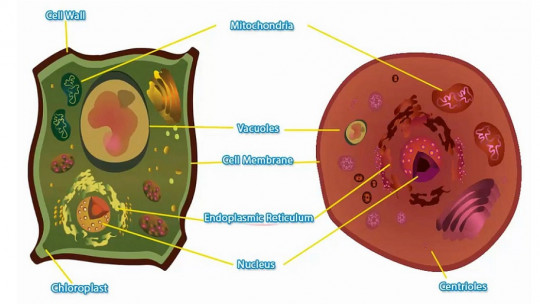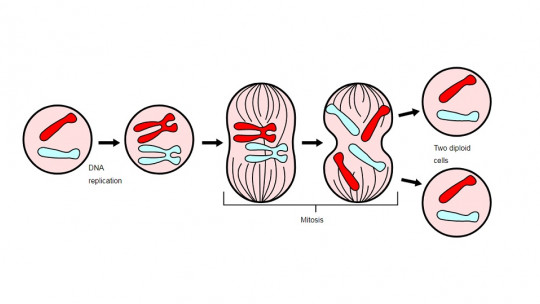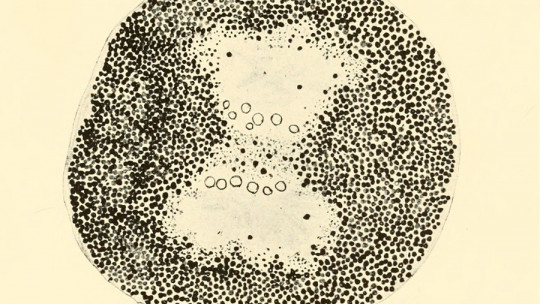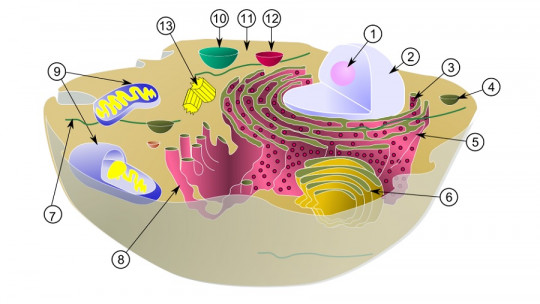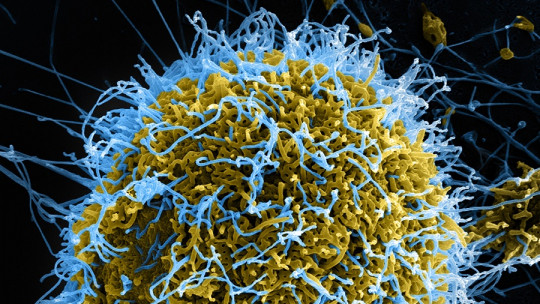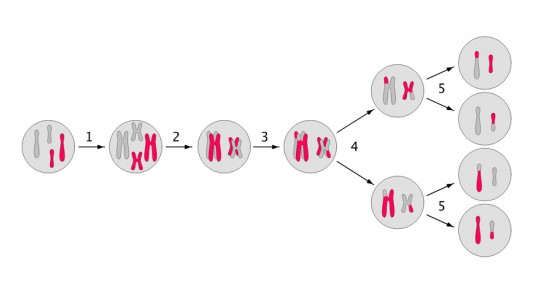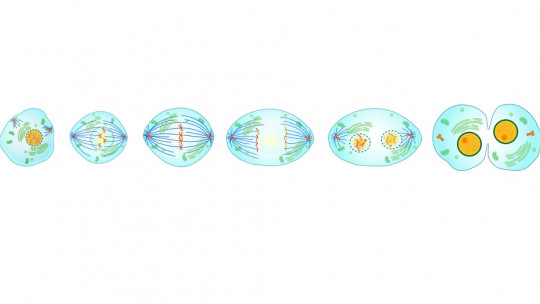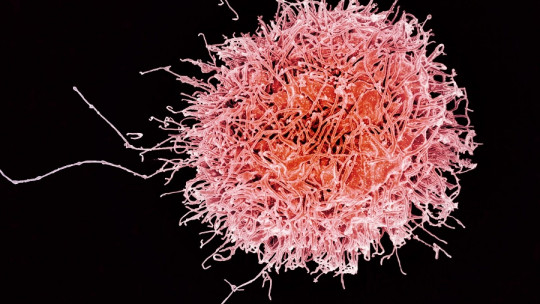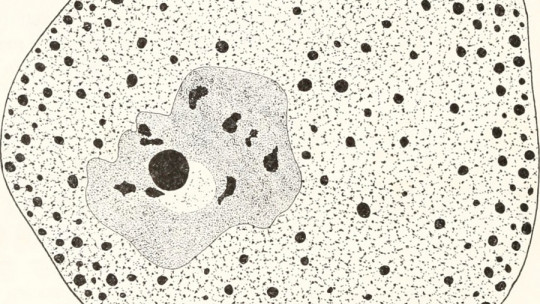
Have you ever heard of nucleoplasm? It is the internal environment of the cell nucleus (the most important part of the cell), and it supports many substances involved with the cell’s metabolism and genetic expression.
In this article we will learn about the structure, composition, appearance and most notable functions of this very specific part of the cell. First, however, we will review the concept of a cell, and at the end of the article we will talk about the rest of the components of the cell nucleus, beyond the nucleoplasm.
The cell as a basic unit
The cell is the basic unit of all living beings; It is a microscopic structure, with the cell nucleus as the main component The human being is made up of millions and millions of cells, which are distributed throughout the body, making life possible.
In turn, the cell nucleus is made up of different components; one of them is the nucleoplasm, its internal and viscous environment.
But what exactly does this structure consist of? What characteristics does it present? What is its appearance and composition? And its functions…? We will solve all these questions in this article.
Nucleoplasm: what it is, and general characteristics
The nucleoplasm (which also goes by other names, such as nuclear cytosol, nuclear juice, nuclear matrix, karyoplasm or karyolymph) It is the internal medium of the cell nucleus, semi-liquid in nature (it has a slimy texture). That is, it forms the internal part of the cell nucleus, which is the most important part of the cells (mainly because the genetic material is found there: DNA).
Within the nucleoplasm we can find two essential elements of the cell: DNA (genetic material) (in the form of fibers or chromatin) and RNA (ribonucleic acid) (in the form of fibers, known as nucleoli). Thus, we can say that This structure is made up of a series of elements that enable genetic expression
Regarding its appearance, the nucleoplasm has a viscous texture and constitutes a semi-liquid medium. Its appearance is homogeneous, although it has a specific less viscous area, called hyaloplasma.
What do we find in the nucleoplasm?
Within the nucleoplasm, different components of the cell nucleus are distributed, highlighting: nucleotides (which enable the formation and replication of DNA), enzymes (responsible for directing the different activities carried out in the nucleus itself) and the nucleolus (structure that transcribes the ribosomal RNA).
What is its structure?
The nucleoplasm It is part of the living material of the cell (located inside), which is called protoplasm
At a structural level, the nucleoplasm is surrounded by the nuclear membrane, which separates it from the cytoplasm. In addition, the nucleoplasm separates the chromatin from the nucleolus (structures that we will explain later).
Composition: various substances
Regarding its composition, there are many substances that make up the structure of the nucleoplasm, or that are found within it. In fact, its composition is similar to that of the cell cytoplasm.
Notably the nucleoplasm is made up of 80% water Water is its liquid phase, where organic compounds called compatible solutes are found dispersed.
On the other hand, the nucleoplasm is also made up of proteins and enzymes that are related to the metabolism of nucleic acids (DNA). Beyond these proteins, we also find others, called residual proteins, that are not linked to DNA or RNA, as the previous ones are.
Finally, the nucleoplasm is also made up of other substances, such as precursor molecules, small water-soluble molecules (related to cell signaling), cofactors (components necessary for enzymes to act) and substances that intervene in the glycolysis process (through from which we obtain energy from glucose).
Hormones and lipids
On the other hand, different hormones move through the nucleoplasm, bound to their respective nuclear receptors. These substances are steroid hormones, and are, fundamentally, the following: estrogen, testosterone, aldosterone, cortisol and progesterone
We also find lipids in the nucleoplasm (specifically, they are suspended inside the cell nucleus), as well as phospholipids and fatty acids; the latter are involved in the regulation of gene expression.
Features
We have seen the most relevant characteristics of the nucleoplasm, but what are its functions? Mainly, the nucleoplasm is the medium that enables the development of certain chemical reactions, essential for the metabolic functions of the cell nucleus
These reactions usually occur due to the random movement of molecules. This movement is called “Brownian movement” and consists of random collisions between molecules suspended within the nucleoplasm. It is a simple and non-uniform diffusion movement.
On the other hand, the aqueous medium that makes up the nucleoplasm also facilitates the activity of enzymes, as well as the transport of different substances necessary for the correct functioning of the nucleus and, by extension, the cell. All this is possible, in large part, due to its viscous texture
Other parts of the cell nucleus
We have seen how the nucleoplasm is part of the nucleus of any cell, and configures its internal environment with a viscous or semi-liquid texture. However, the core is also made up of other components, which are:
1. The nuclear envelope
This structure of the cell nucleus is made up, in turn, of an outer membrane and an inner membrane. Also called nuclear membrane or karyotheca, it is a porous structure that separates the nucleoplasm from the outside
2. The nucleolus
Also called nucleolus, it is an area or structure within the cell nucleus, and has the function of transcribing ribosomal RNA It also participates in the regulation of the cell cycle, intervenes in aging processes and regulates cellular stress responses.
3. Chromatin
Chromatin is a form of presentation of DNA located in the cell nucleus. Consists in the basic substance of the chromosomes of eukaryotic cells (binding of DNA, RNA and proteins) In turn, chromatin can take two forms: heterochromatin and euchromatin.
4. Ribosomes
ribosomes They are made up of RNA and ribosomal proteins, and enable the expression of genes through a process called translation.
5. The NPC (nuclear pore)
Finally, another component of the cell nucleus is the NPC or cell pores, which constitute large protein complexes that cross the membrane of the cell nucleus.

